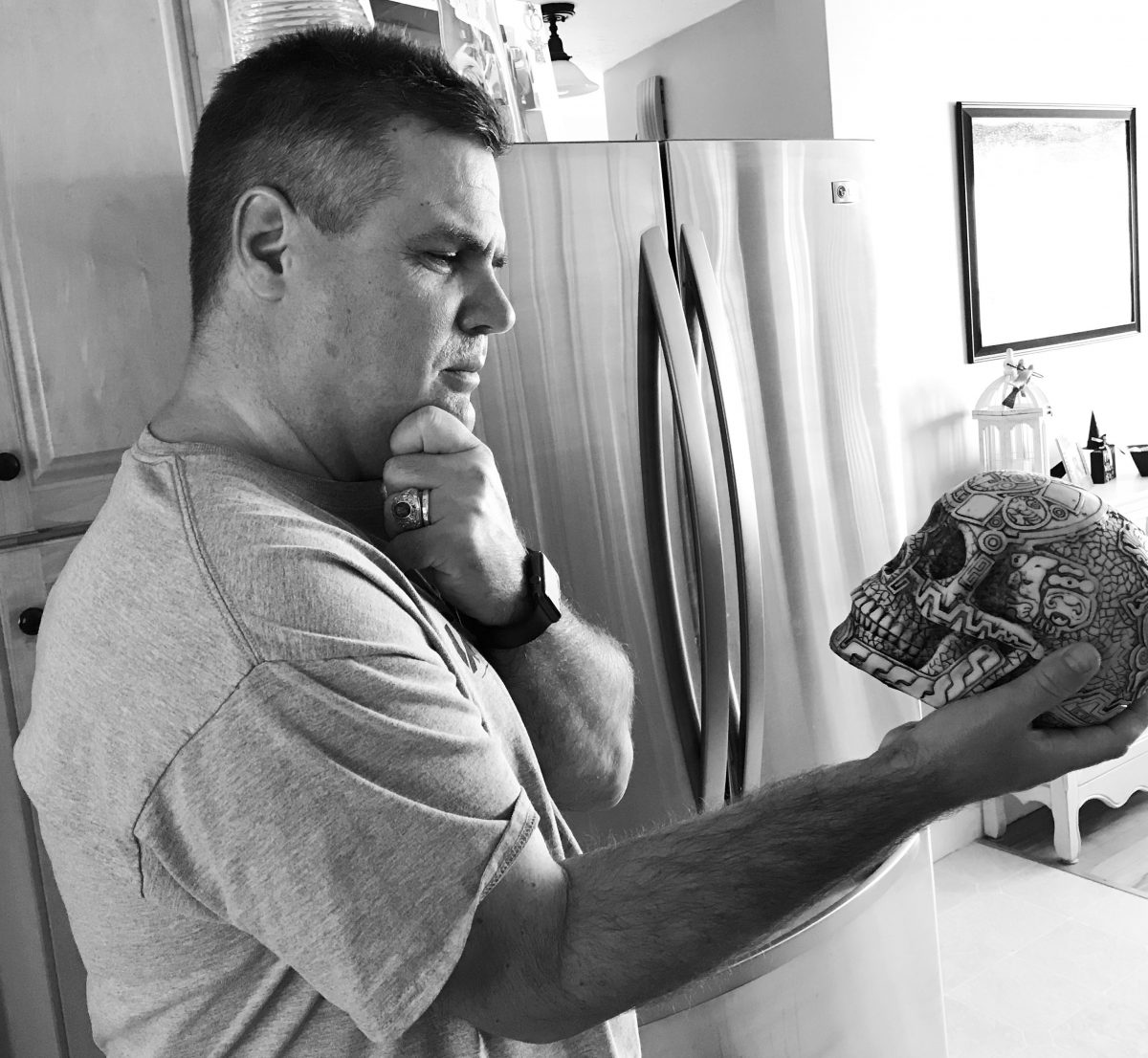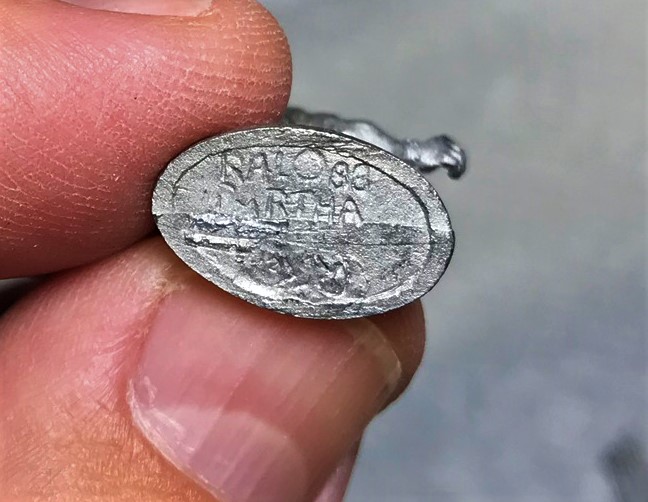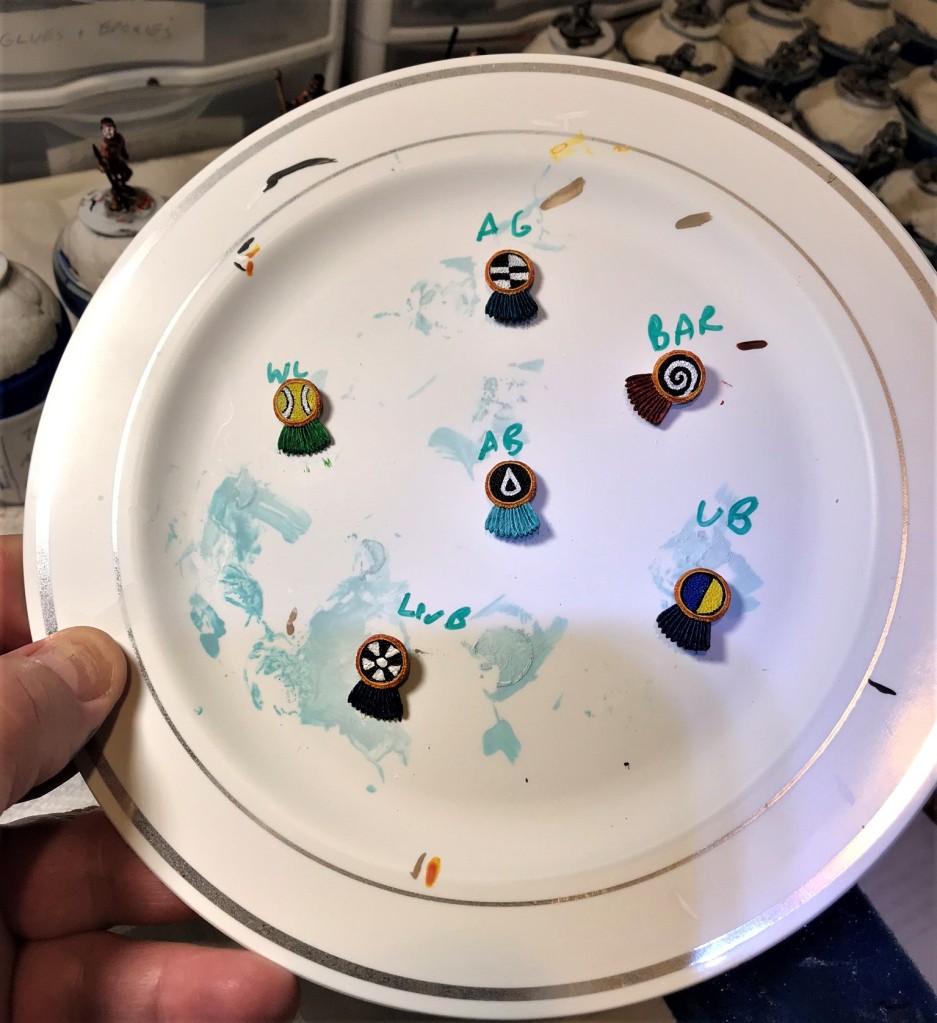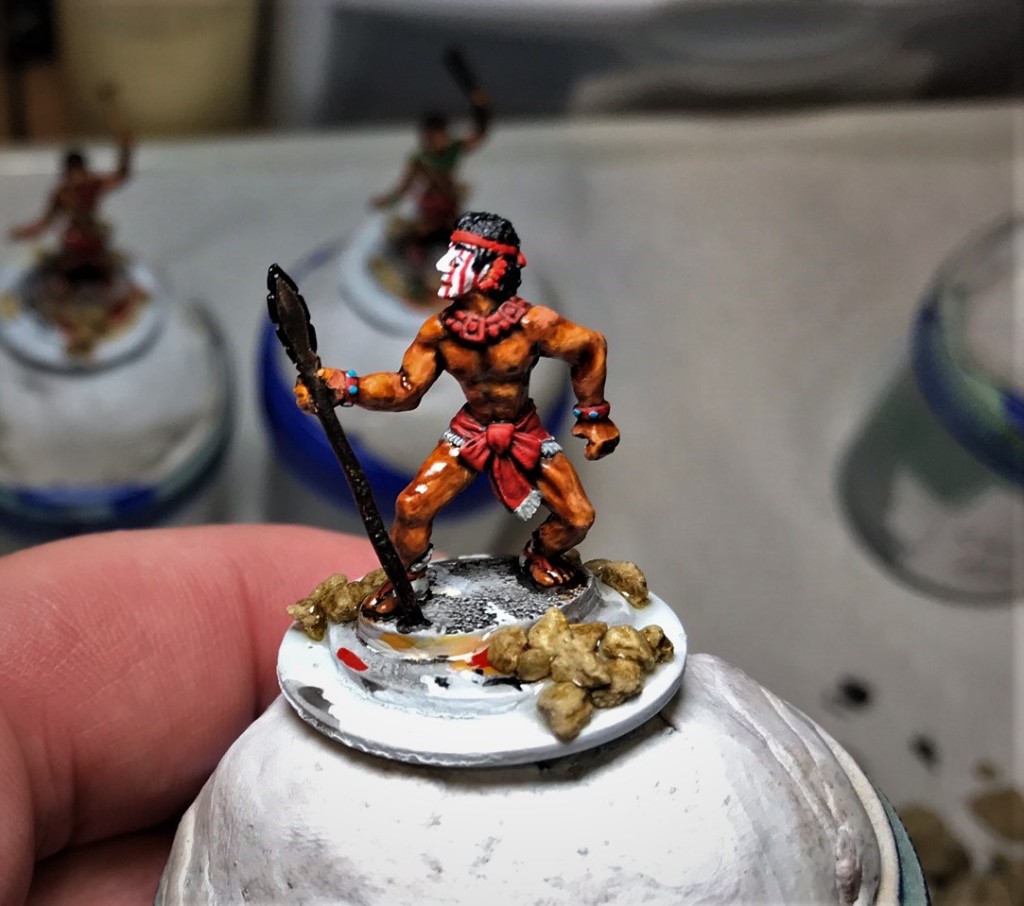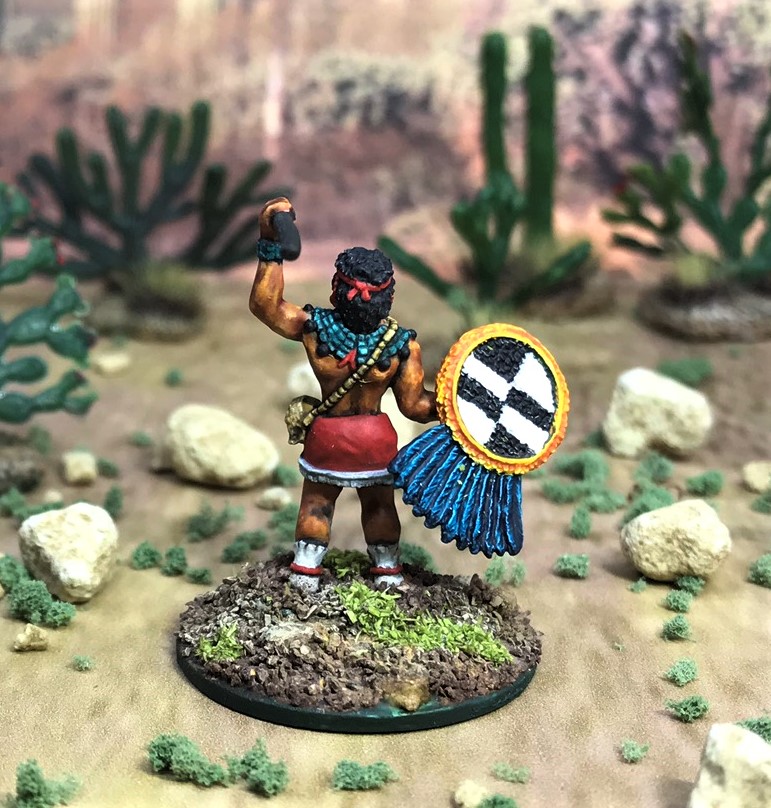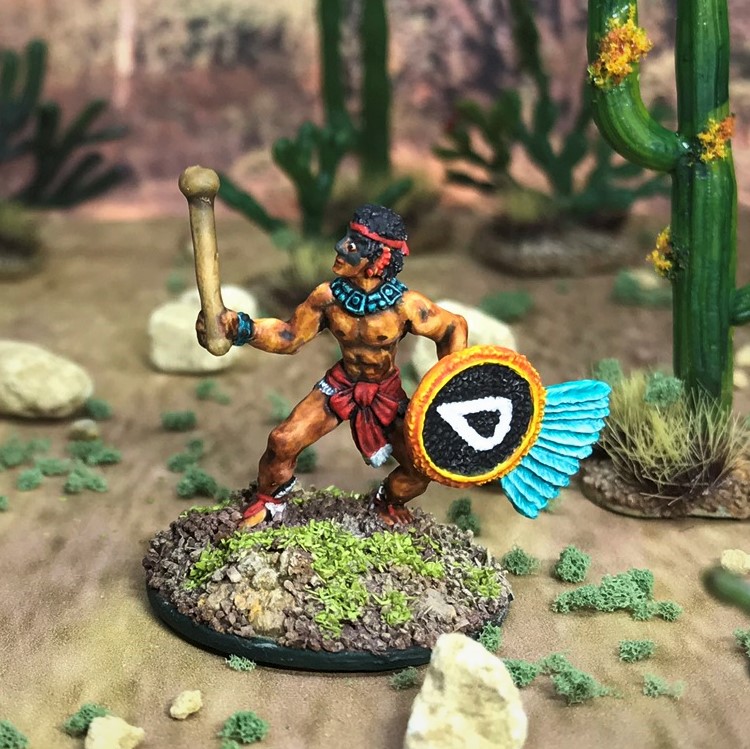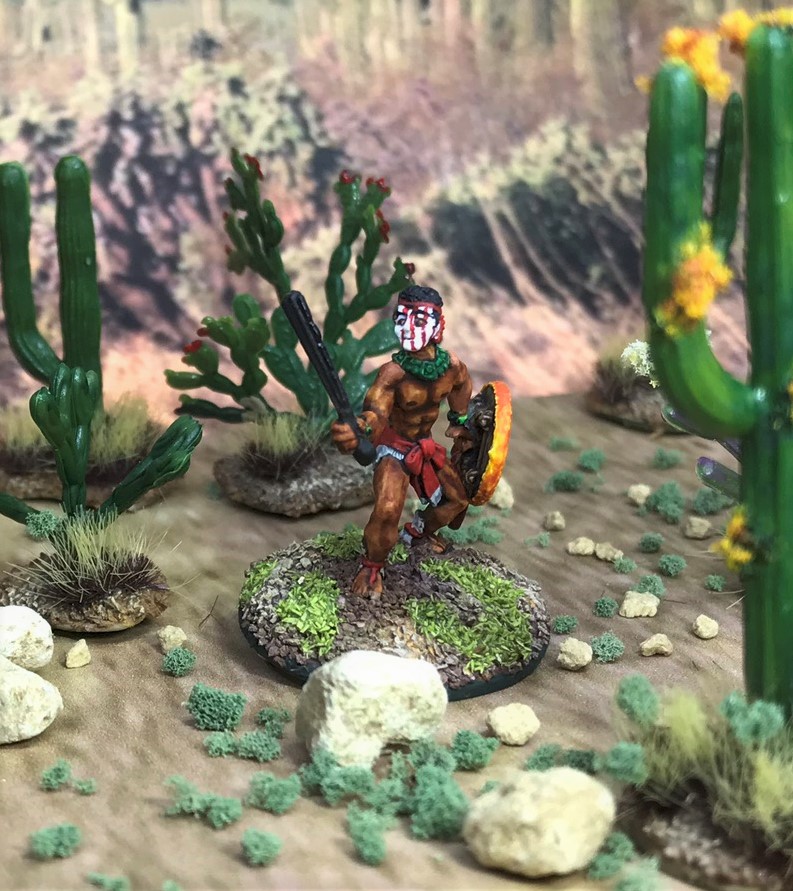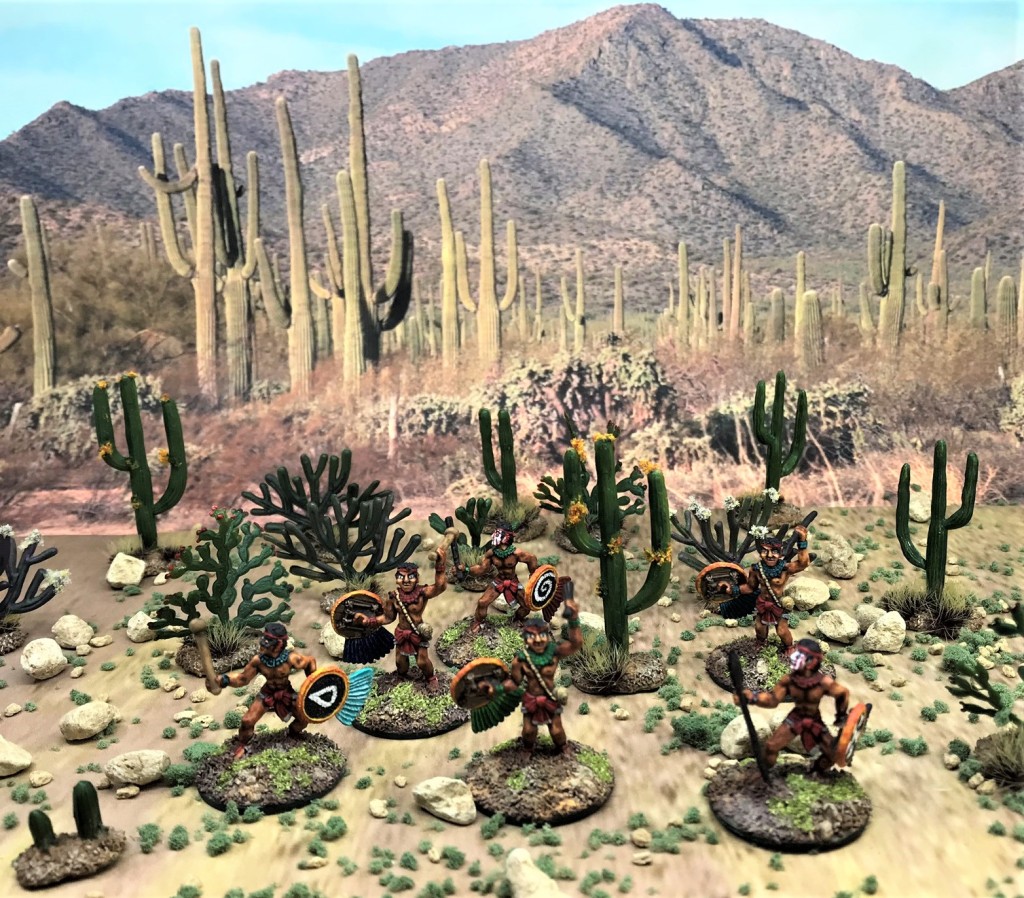Well, not exactly…more like into one of my storage boxes to await a future game…but now that I have your attention, welcome!

I just finished adding 18 Aztec Novice Warriors to my forces for games of Feudal Patrol™ – using the “Civilizations Collide” supplement that I have discussed previously on several posts (you can see list of these posts at the end of this post if you’d like to see what you’ve missed). I had needed to add some more novices to pair up with veterans for the game. Aztec veteran warriors would have novices attached to them for training and development in the tactics and techniques of Mesoamerican warfare. Aztecs preferred capturing their enemies versus killing them – after all, they wanted live captives for sacrifice.
Under veteran tutelage, novices would try to capture enemy warriors. Their success at this would allow them to gain rank as well as increased Aztec societal and cultural prestige (depending upon the number and quality of the captured enemy warriors). This increase in rank would also be shown by the warriors having the right to wear different and fancier uniforms. Of course the captured warriors would be most often sacrificed alive on the altar of Huitzilopochtli in the Aztec capital of Tenochtitlan.
Returning to the gaming project, I now have figures for 30 novices and 27 veterans, which should put me in good stead game-wise. These figures came from Badger Games and were manufactured by Wargames Foundry. The 18 figures discussed here came from two blisters of AZ016 “Novice Warriors I” and one of AZ028 “Novice Warriors III”. All were sculpted by Josef Ochmann. I previously painted up 12 from AZ018 “Novice Warriors II” that I posted about here. These were similar to those models, and most of this group are armed with slings. Unfortunately, for the non-slingers, there were no other weapons in the AZ028 blister, just shields. Not a problem, as I had some Outpost Wargames Services extra weapons and some extra shields already painted up for any non-slingers (Badger also sells OWS). I am sure that Badger would have taken care of it if I let them know (they are great), but I had the situation under control.
I must say that the Foundry mold lines here on some of the models were a greater problem than those I have painted before from OWS. I tried my best to fix what I could without destroying the figures, but there’s only so much one can file away before the cure becomes worse than the disease. I am going to jump right into some pictures and then as usual some references for those interested in that sort of detail.
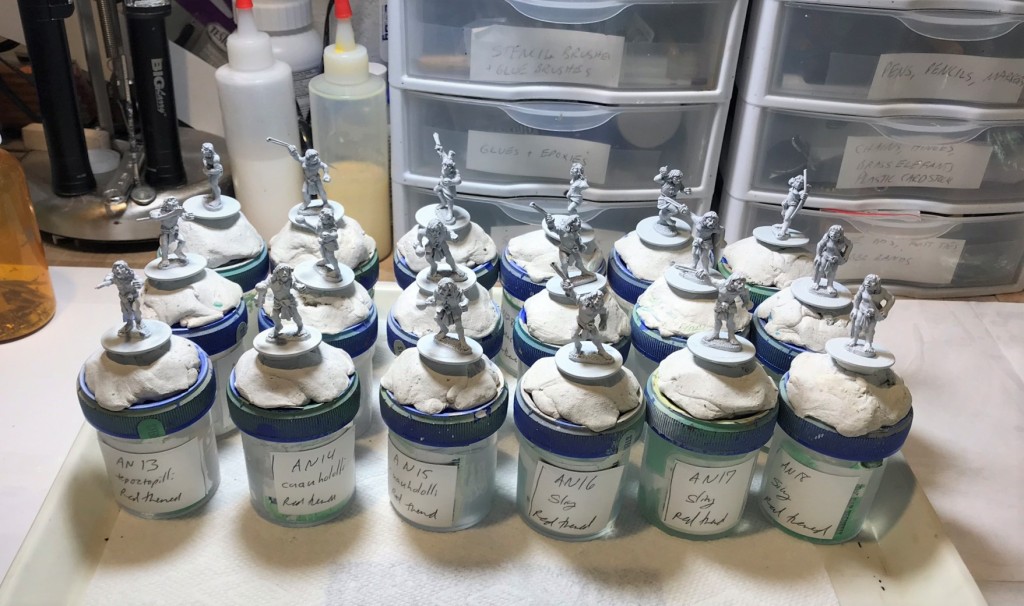


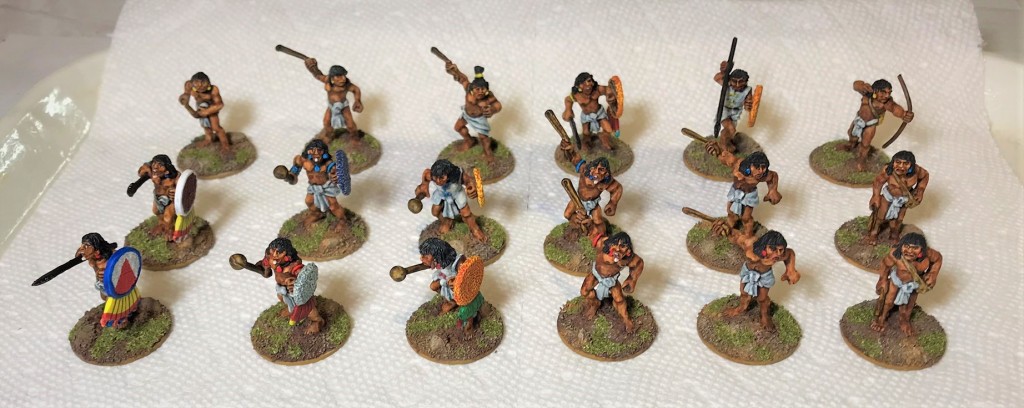
Because I had bought two 6-figure blisters of AZ016, I wanted to paint them differently enough so that they would be interesting on the tabletop. I will show the similar poses together, and then the single poses.
I have numbered my novices AN1 to AN30, with this project concerning AN13 to AN30.
AN13 and AN19 – armed with a tepoztopilli (obsidian-edged thrusting spear pronounced tay-pose-toe-pee-lee) and a shield, but no other armor.


AN14 and AN20 – armed with a cuauhololli (round-headed wooden club – pronounced kwa-ho-lolly) and a shield, but no other armor.
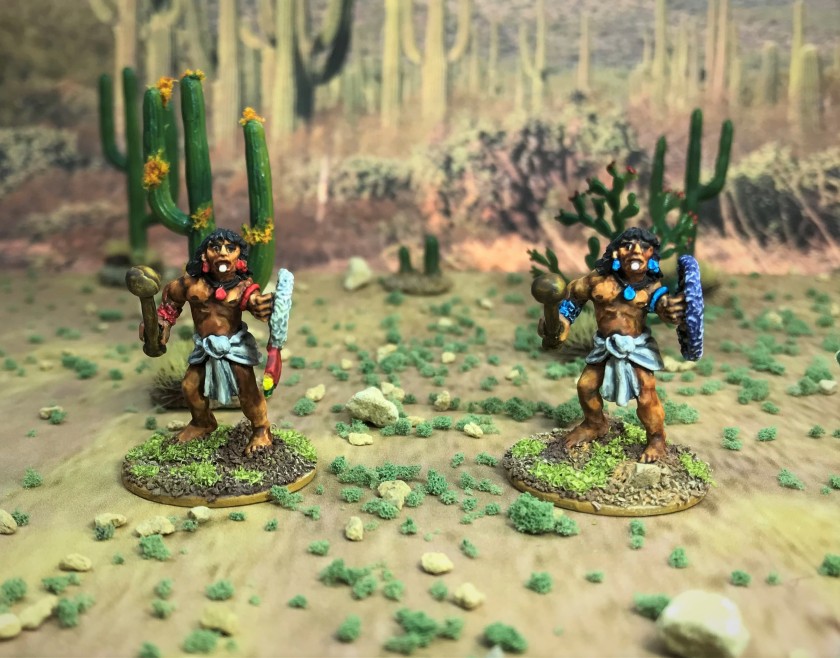

AN15 and AN21 – armed with a cuauhololli (round-headed wooden club) and a shield, and quilted cotton armor called ichcahuipilli (pronounced each-ca-we-pilli).


AN16 and AN22 – armed with slings, no shield, and no armor.
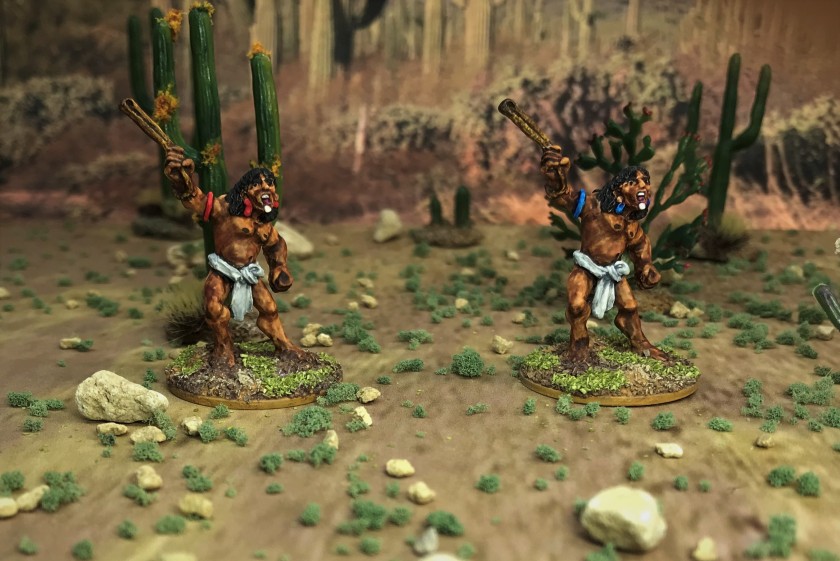

AN17 and AN23 – armed with slings, no shield, and no armor.


AN18 and AN24 – armed with slings, no shield, and no armor.


AN25 – armed with a sling, no shield, and no armor. This is the first figure from the AZ028 blister.
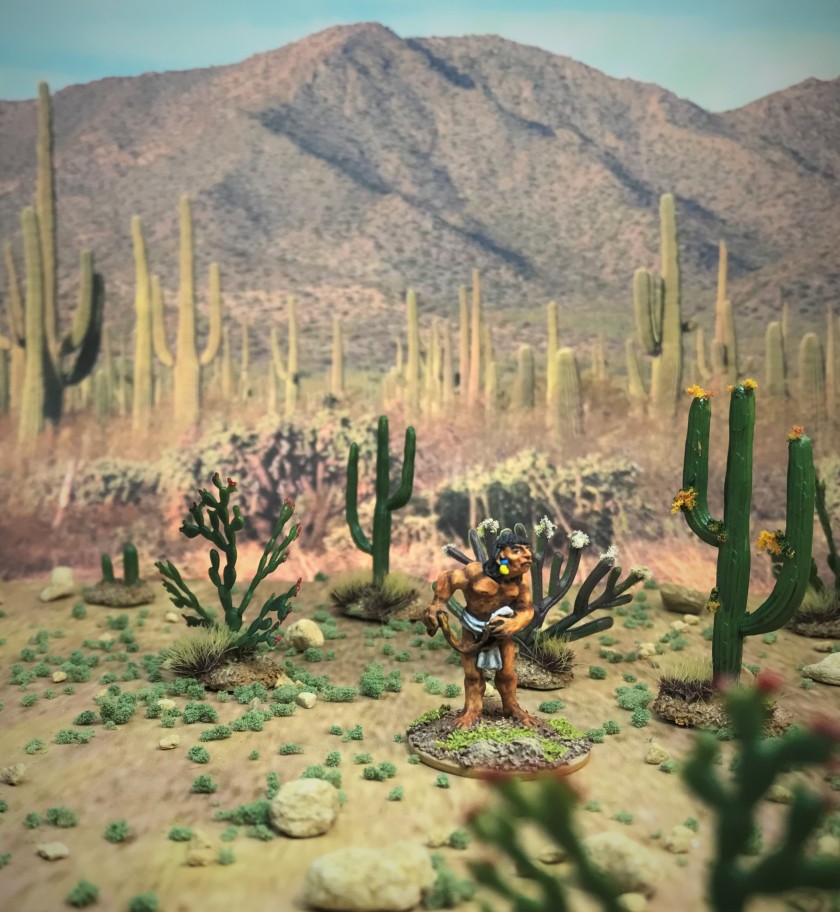

AN26 – armed with a sling, no shield, and no armor.


AN27 – armed with a sling, no shield, and no armor.


AN28 – armed with a macuahuitl (an obsidian-edged club/broadsword), a shield, and no armor.


AN29 – armed with a tepoztopilli and a shield, and quilted cotton armor (ichcahuipilli).
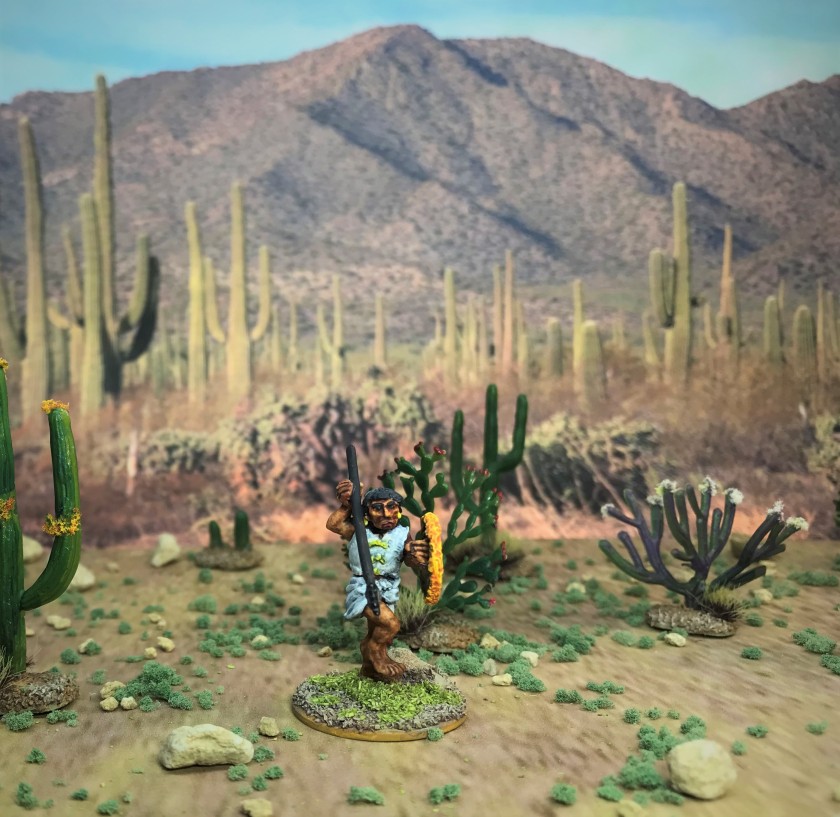

AN30 – armed with a bow, no shield, and no armor.


That’s a lot of troops – and this month (October 2020) I have painted 42 in total after adding these 18 – a record for me. And I still have 2 days left, but likely this is it for October. I am nearly through what I need to paint for the Aztecs – then I can move on to the Spanish.
And as for the video I promised, here it is below. A group in Baltimore built a macuahuitl. I found it interesting, even though they did not know the correct pronunciation of macuahuitl! There’s obviously an old gamer there as shown by the paints used. Enjoy!
That’s all for this post. I’d be interested in your thoughts on this post and the project in general. Let me know in the comments section, share this post if you’d like, and as always, thanks for looking!

Miscellaneous details and references for those interested in that sort of thing:
Posts on games, units, and other projects for my 16th Century Spanish Conquest supplement for Feudal Patrol™ – “Civilizations Collide”
- 18 Aztec Novice Warriors for Feudal Patrol Walk into a Bar (this post) – 18 Novice Warriors
- Aztec Warrior Priests (painted as Tlaxcalans), Ral Partha 42-302, circa 1988 (this post) – 6 figures – 6 Tlaxcalan Warrior Priests
- Tlaxcalan Novices, Elite Warriors, and Command Group – 18 figures – 8 Novice Tlaxcalan Warriors, 8 Elite Tlaxcalan Warriors, 1 Tlaxcalan Captain, 1 Tlaxcalan Conch Blower
- Tlaxcalan Archers – 8 Veteran Tlaxcalan Archers
- Aztec Game for Feudal Patrol across thousands of miles – via Zoom!
- Aztec Snake Woman and Drummer – 1 Aztec General, 1 Aztec Drummer
- A June and July Jaguar Warrior Frenzy (plus some Aztec Veterans and a Warrior Priest to Boot) – 3 Aztec Veteran Warriors, 17 Jaguar Warriors, 1 Aztec Warrior Priest
- Doubling Down – Aztec Veteran Warriors – 24 Aztec Veteran Warriors
- Aztec Arrow Knights, Ral Partha circa 1988 – 6 Aztec Arrow Knights
- Aztec Eagle Warriors from Tin Soldier UK – 6 Aztec Eagle Knights
- Aztec Novice Warriors and a few Frinx – 12 Novice Warriors
Total figures to date for this project: 121 figures: 89 Aztecs, 32 Tlaxcalans
PAINTS, INKS, GLAZES, SHADES, WASHES, PIGMENTS, FLOCKING, GLUES AND MORE THAT I USED ON THESE AZTEC NOVICE WARRIORS:
- Gorilla Glue
- 1/8″ x 1″ Everbilt Fender Washers
- Poster tack
- Vallejo “Surface Primer – White Primer”
- Vallejo “Flow Improver”
- Vallejo “Airbrush Thinner”
- Testors “Universal Acrylic Thinner”
- Citadel “Nuln Oil” (shade)
- Vallejo Model Air “Weiss” (off-white)
- Vallejo Game Air “Black”
- Army Painter “Tanned Flesh”
- Vallejo Game Color “Bronze Fleshtone”
- Vallejo Model Color “Sunny Skin Tone”
- Citadel “Agrax Earthshade” (shade)
- Battlefront “Chocolate Brown”
- Citadel “Contrast Paint – Darkoath Flesh”
- Citadel “Contrast Paint – Contrast Medium”
- Army Painter “Flesh Wash” (wash)
- Citadel “Contrast Paint – Black Templar”
- Citadel “Contrast Paint – Citadel “Contrast Paint – Volupus Pink”
- Secret Weapon Washes “Blue” (wash)
- Secret Weapon Washes “Sunshine” (wash)
- P3 “Red Ink” (ink)
- Citadel “Contrast Paint – Apothecary White”
- Citadel “Contrast Paint – Snakebite Leather”
- Citadel “Contrast Paint – Aggaros Dunes”
- Citadel “Contrast Paint – Skeleton Horde”
- Citadel “Contrast Paint – Gore Grunta Fur”
- Citadel “Contrast Paint – Warp Lightning”
- Citadel “Contrast Paint – Blood Angels Red”
- Citadel “Contrast Paint – Ultramarines Blue”
- Citadel “Contrast Paint – Aethermatic Blue”
- Citadel “Contrast Paint – Iyanden Yellow”
- Citadel Air “Evil Sunz Scarlet”
- Citadel Air “Balor Brown”
- Citadel “Contrast Paint – Wyldwood”
- Citadel “Contrast Paint – Terradon Turquoise”
- Battlefront “Wool Brown”
- Vallejo Model Color “Glossy Black”
- Vallejo Model Color “Dark Blue”
- Vallejo Model Air “Moon Yellow”
- Vallejo Game Air “Satin Varnish”
- E6000 Epoxy
- 4Ground small talus pieces
- Elmer’s PVA Glue
- Army Painter “Brown Battlefields” (flocking)
- Vallejo “Dark Yellow Ochre” (pigment)
- Vallejo “Burnt Umber” (pigment)
- Citadel “Steel Legion Drab”
- Citadel “Tallarn Sand”
- Citadel “Karak Stone”
- Americana “Desert Sand”
- Vallejo Mecha Varnish “Matt Varnish”
- Army Painter “Grass Green” (flocking)
Please let me know your thoughts and feedback in the comments section – I really appreciate learning any impressions or thoughts in general (or specific) that you have.
Thanks for looking!
